

Hs 129B-3

The Henschel Hs 129 was the eventual choice of the RLM for their issued requirement for a Schlachtflugzeug or close support aircraft. The other contenders, Blohm und Voss and Focke-wulf were two seat airplanes based on already existing designs (Bv 141 and the Fw 189). The initial variant of the 129, the A-0 version was powered by two Argus 410A engines, same as the one used on the Fw -189 as they were the only low powered engines available at the time of the design. The prototype flew in the Spring of 1939. From the outset the plane was seriously underpowered even without weapons and pilots complained about the inadequate view from the cockpit. With the defeat of France the Gnome- Rhone small diameter 14 cylinder radial engines became available and were mated to the Hs 129. In spite on being almost twice as heavy as the Argus engines, the conversion presented no insurmountable problems and they markedly improved the performance. The Gnome- Rhone powered version was put into production as the Hs 129Band included a more extensively glazed armored cockpit canopy and other improvements. Its standard armament included 2 MG 151 20mm cannon and 2 MG 17 7.9mm machine guns. The aircraft had a very cramped cockpit as it was designed to provide as small of target as possible from the front. As a result of this some of the engine related gauges were located in the inner sides of the engine cowling and the gun sight was located outside the windscreen. Besides the standard armament a variety of external packages were designed to carry numerous antitank guns. These included the MK 101 and 103 30mm antitank cannon and the BK 3,7 37mm cannon. The final variant was built to handle the BK 7,5 75mm cannon which was a modified PaK 40. Only 24 of this version was built before the Hs 129 program ended and the aircraft were sent to the Eastern front. Very little is known of their operations there during the final stages of the war. The Gnome-Rhone engines were the planes Achilles heel as they tended to be unreliable.
Even though they were not used in large numbers I have always been fascinated with the little plane with the big cannon so I decided to built the -3 variant
The Kit
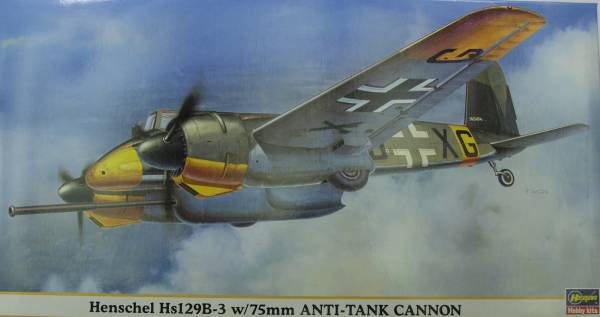
The Hasegawa B-3 kit is essentially the same kit as the B-2 variant with the exception of the sprue shown below which in the B-2 kit has the two under fuselage guns as an add-on to one end. The other difference is the inclusion of a small bag of resin and metal parts. There are 7 resin parts that consist of the cannon housing, a front support for the housing, a gun sight for the cannon, and four plugs that fill in the gun troughs in the fuselage. Depending on the aircraft some had all the fuselage guns deleted others only two of them were deleted. The metal parts consist of a soft metal cast muzzle brake and a turned piece of brass for the barrel. The resin pieces are all cleanly cast with a minimum of flash and the cannon housing has no pour stub which is nice. the cast metal muzzle brake isn't perfectly round and has a parting line that will need to be cleaned up which when removed should bring it in to more of a round shape. I would also be tempted to drill the indentation in the end a bit deeper for a better appearance. The end that the brass barrel fits into also needs to be drilled deeper or the end on the barrel filed down. I would recommend drilling as it will make for a stronger assembly. For comments concerning the rest of the kit parts see the B-2 version review here. Photos of the parts are shown below.
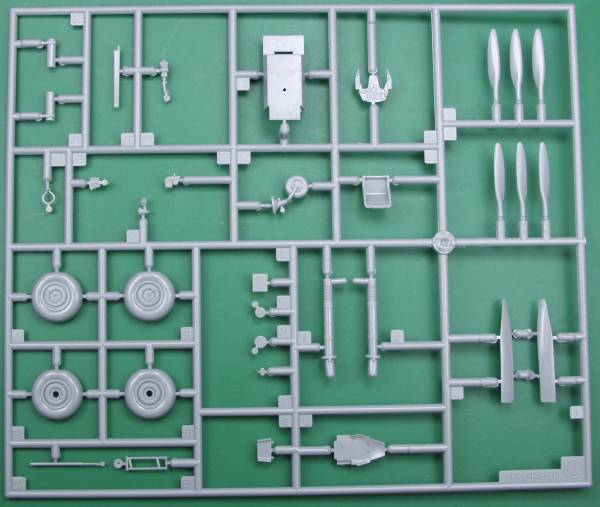
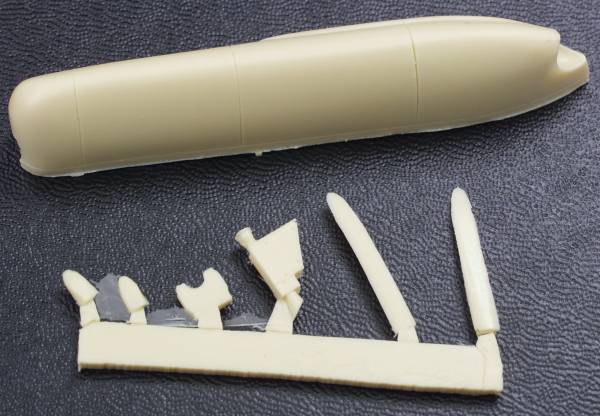
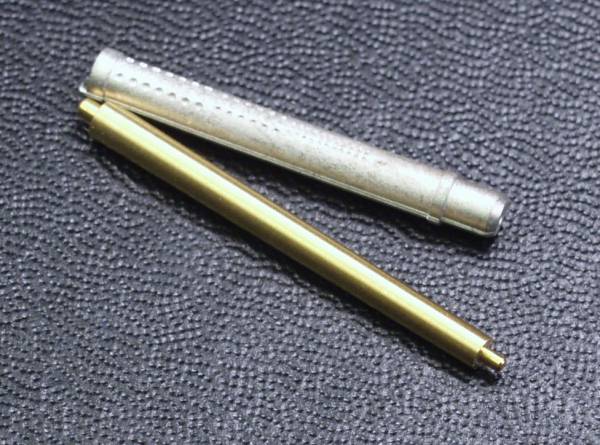
The decals are supplied for two aircraft, one which was a B-2 that upgraded to the B-3 configuration the other one that was built as a B-3. The decals are are thin and opaque and are well registered. A reasonable amount of stenciling is provided as are swastikas. See below.
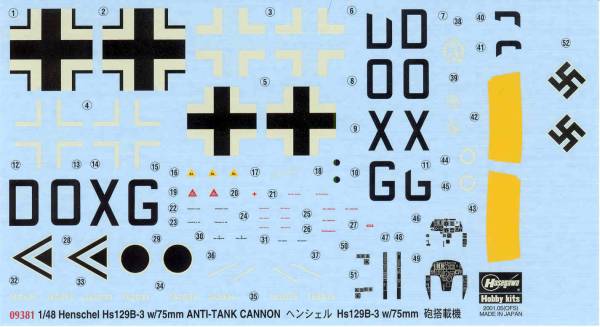
The instructions are printed on a 10" x 28 1/2" sheet folded to form eight pages. Page one includes history and specifications in Japanese and English. The next three pages have assembly instructions. There is one page with a parts map and color chart and two pages of painting and markings instructions. The last page has decaling instructions and the usual safety warnings plus information on preparing and painting of the metal parts.
I plan to do this one pretty much out of box with no after market goodies other than maybe decals.
Conclusions
My comments for this kit pretty much echo those of the B-2 version, this is a nice kit that fits well and is a relatively easy build according to most reviews. There are certain no reason not to heartily recommend it to modelers of any skill level.
Links to kit build or reviews
Reviews / builds of the B-2 version can be found here and here
References
"Warplanes of the Third Reich" by William Green
"Henschel Hs 129 in Action" by Denes Bernad
Updated 5/27/08